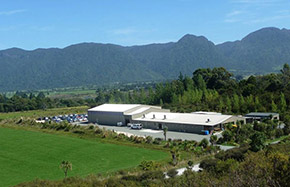ADB sees solid growth in developing Asia this year
MANILA - The Asian Development Bank (ADB) said Thursday that developing Asia will continue to perform well this year even as recovery in the major industrial economies remained weak, predicting the region's economy to expand by 5.7 percent in 2017 and 2018.
Asian Development Outlook 2017, the ADB's annual economic publication, said continued expansion helps developing Asia deliver more than 60 percent of global growth.
"Gross domestic product for the region as a whole is expected to grow by 5.7 percent in 2017 and 2018, a tick down from the 2016 outcome of 5.8 percent as the controlled moderation of growth in China is balanced by expected healthy growth elsewhere," said the report released on Thursday.
Excluding the high-income newly industrialized economies like South Korea and Singapore, the report said regional growth is expected to reach 6.3 percent in 2017 and 6.2 percent in 2018.
"Growth is picking up in 30 of the 45 economies in developing Asia, supported by higher external demand and rebounding global commodity prices," the report said.
Indeed ADB chief economist Yasuyuki Sawada said the region "faces risks from uncertain policy direction in the advanced economies, including the pace of interest rate normalization in the United States."
"While short-term risks seem manageable, regional policy makers should remain vigilant to respond to possible spillover through capital flows and exchange rate movements," Sawada said.
China's economy will continue "to rebalance, depending more on consumption to drive growth."
"A further shift of economic activity from industry to services shows rebalancing progressing as planned. Growth in China now relies more on internal demand and less on exports," the report said, adding that China's economy will experience "moderate deceleration" growing 6.5 percent in 2017 and further to 6.2 percent in 2018.
After slowing down in the first half of 2016, the report said the United States, the euro area and Japan are forecast to grow collectively by 1.9 percent in both 2017 and 2018.
The report predicted Japan's economy to continue to recover "but may lose some steam unless export growth maintains its new momentum."
India's economy is expected to edge up to 7.4 percent in 2017 and 7.6 percent in 2018, the report said.
The report predicted growth in Southeast Asia to accelerate further this year and in 2018.
"After rising 0.1 percentage points to 4.7 percent in 2016, growth will continue to improve to 4.8 percent in 2017 and 5.0 percent in 2018, with nearly all Southeast Asian economies showing an upward trend," the report said.
The report added, "Recovery for global food and fuel prices and in agricultural output will help commodity producers such as Indonesia, Malaysia, and Vietnam. Indonesia, the largest economy in the subregion, should see fiscal and structural reforms boost domestic demand."
Prospects for Central Asia and the Pacific rise along with commodity prices, said the report.
"Higher oil prices will support fiscal spending in Azerbaijan and Kazakhstan, and one-off currency depreciation in these economies has already improved net exports," the report says.
The report predicted Central Asia to grow to 3.1 percent in 2017 and 3.5 percent in 2018 "though individual economies are growing at significantly different rates."
In the Pacific, the report said rising commodity prices are taking some pressure off a fiscal crunch in Papua New guinea.
With Fiji and Vanuatu recovering from natural disasters suffered in 2015, the report predicts the Pacific subregion to grow by 2.9 percent and 3.3 percent in 2018.
However the report warns the "uncertain policy directions abroad could undermine the regional outlook."
"While baseline consumptions have factored in gradual increases in US interest rates, the report said "sharper-than-expected US monetary tightening could have further consequences for developing Asia."
Those economies in the region with high corporate or household debt would be particularly vulnerable to financial shock.
"Possible shifts in trade and tax policies, especially policy changes being discussed in the US, could create uncertainty for business investment and export growth in developing Asia," predicted the report.
- ADB package set to boost green growth
- ADB helps boost clean waste-to-energy PPP in China
- Increased structural reform will enable China to achieve its growth target in coming years: ADB economist
- ADB loan to fight air pollution in greater Beijing
- ADB, AIIB join hands to support energy-starved Bangladesh






















